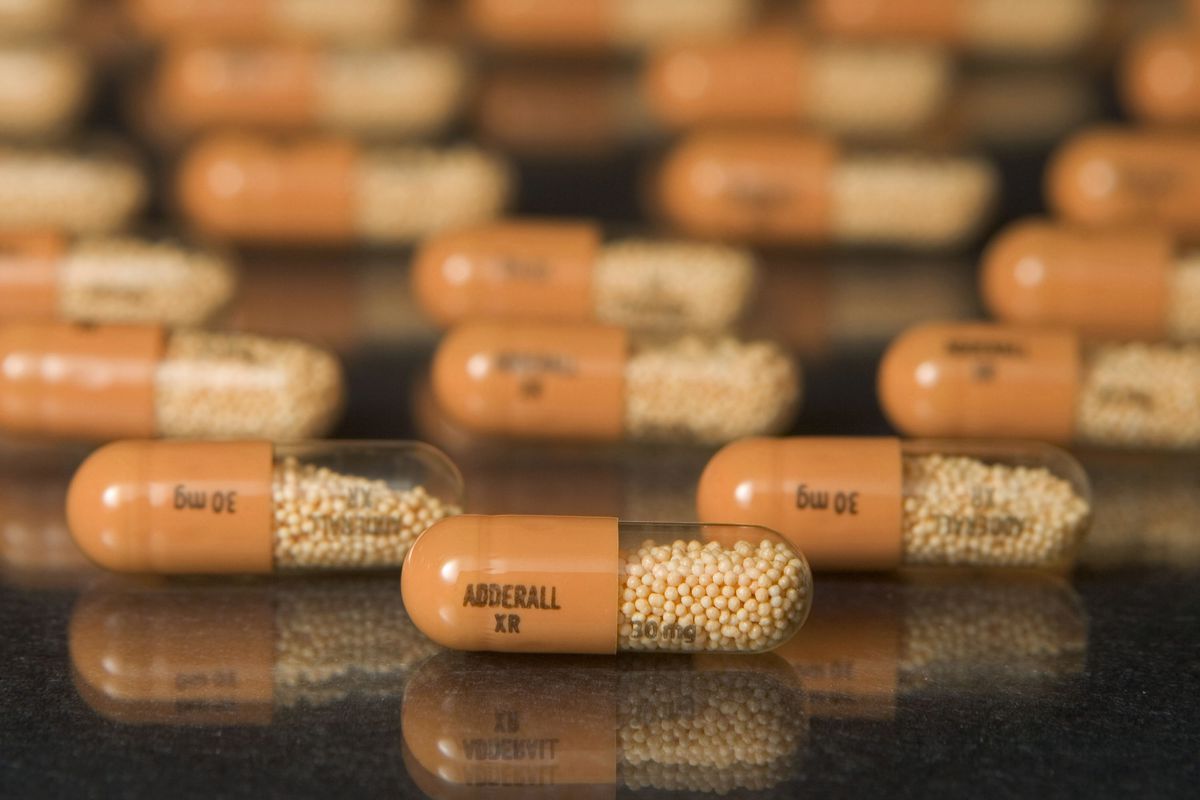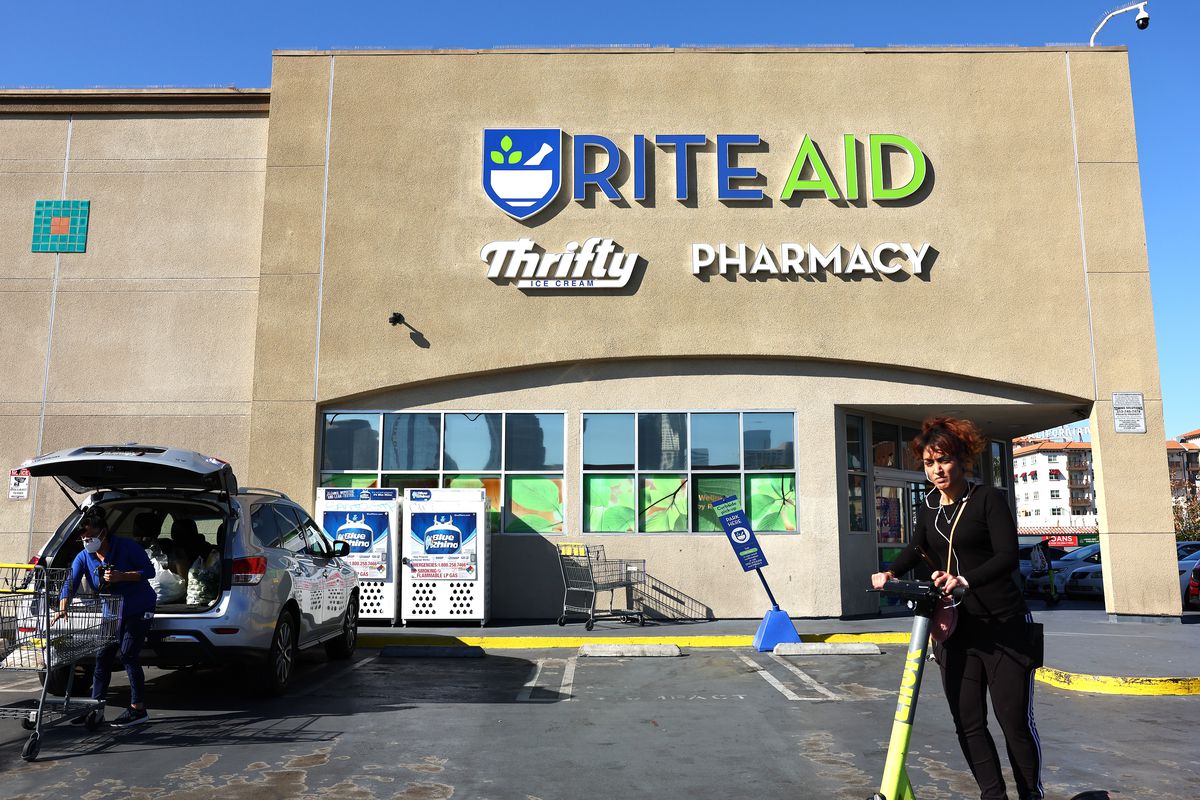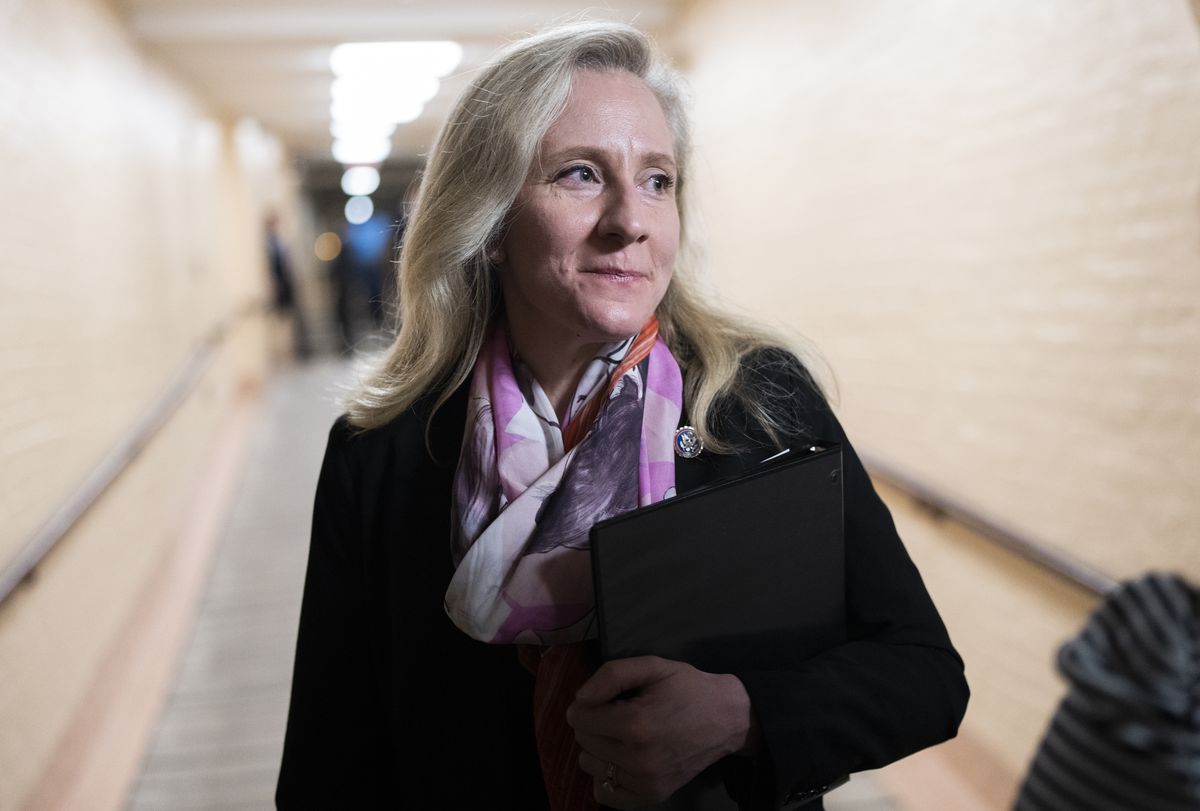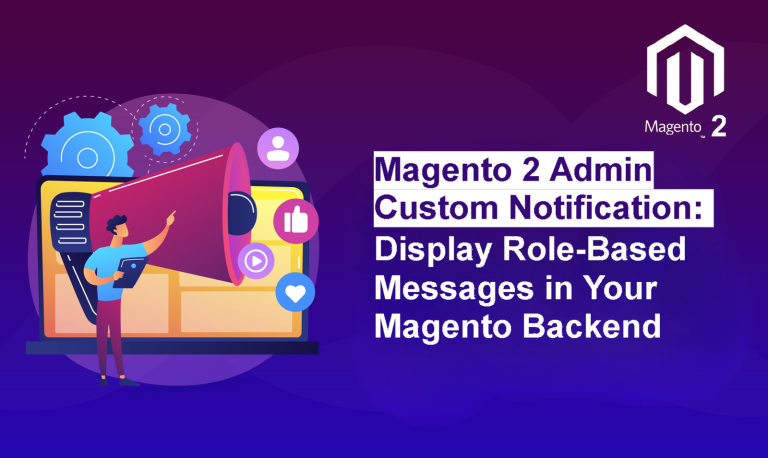Nicole can’t do her job without her medication. The resident physician in Wisconsin, who is in her early 30s, takes the generic version of a stimulant called Concerta to treat her narcolepsy as well as her attention deficit and hyperactivity disorder (ADHD). Untreated, her ADHD makes it difficult to keep focus and do routine tasks, and the narcolepsy makes it impossible to stay awake.
“If I sit down for any length of time, like to read a book or emails, I’ll pretty much fall asleep within five minutes or so,” Nicole said. “Around noon, I get this heaviness, that feeling like you are absolutely going to fall asleep no matter what you do.”
But starting last fall, it became progressively harder for Nicole to get her medication. At first, her regular pharmacy needed a few extra days to get it in stock. By January, none of the nearby pharmacies in her insurance’s network had it. She had to wait two weeks for her insurance to agree to cover the more expensive brand-name version of the drug at an out-of-network pharmacy, which was the only place and the only version of the drug she could find. She had to go without her medication for most of that time.
Without it, Nicole can’t drive or do certain parts of her job. She was doing a research rotation last time she ran out of her meds, so she was able to keep working. But she has a surgery rotation coming up, and she has no idea if she’ll have her meds by the time it does.
“I can’t operate without medication. It’s not safe,” Nicole said. “I can’t be a functioning doctor.”
Many people like Nicole who rely on prescription stimulants are finding the pharmacy cupboards bare. Adderall, which uses amphetamine salts as its active ingredient, is the most well-known of these drugs, and ADHD is the most well-known condition they treat. But methylphenidate-based stimulants like Concerta and Ritalin are also increasingly hard to find. And they don’t just treat people with ADHD, though the effect of the shortages of them has gotten nearly all of the attention from media, lawmakers, and drug monitoring agencies.
People who have narcolepsy need these drugs, too. They’ve largely been invisible because there are so few of them. Recode spoke to several, nearly all of whom wished to remain anonymous or not use their full name because they didn’t want an often stigmatized medical condition to become public.
“Narcolepsy can be incredibly debilitating if left untreated,” Keith Harper, board president of the Narcolepsy Network, a patient support organization, said.
The major cause of the problem appears to be remote-only telehealth companies, which were the beneficiary of a pandemic-era rule change that allowed providers to prescribe controlled substances like stimulants without ever seeing their patients in person. These services advertised aggressively on social media platforms like TikTok, promoting their ease of access to diagnoses of — and drugs to treat — ADHD. Some have been accused of overprescribing drugs through rapid and possibly inaccurate diagnoses, which led to a spike in demand for prescription stimulants that rigid regulatory restrictions made it impossible to meet. Once Adderall went into a shortage, patients had to look for alternatives, including Concerta and Ritalin.
Now those drugs, too, are in short supply. That means many people with narcolepsy can’t get access to the medications they need. Some say it’s ruining their lives.
The telehealth boom was an ADHD boom, too
Narcolepsy is a rare neurological sleep disorder. The cause is unknown, although research has linked it to low levels of hypocretin, a chemical in the brain that controls wakefulness and REM sleep. It has several symptoms, but the best known is excessive daytime sleepiness, which can cause a sudden onset of sleep. There is no cure, but prescription stimulants are one way to treat narcolepsy as well as a similar disorder called idiopathic hypersomnia. For many people who otherwise can’t stay awake, these medications are life-changing.
While an estimated 200,000 people in the United States have narcolepsy, millions of people have ADHD, which is believed to affect about 10 percent of children and 4 percent of adults. ADHD can be treated with the same stimulants, though the effects are different. Prescription stimulants also have a high potential for abuse and addiction, so they’re regulated by the Drug Enforcement Administration as controlled substances. This classification means their production and distribution are tightly managed — everyone from the manufacturers to the patients are subject to various restrictions — and only a certain number of them can be made every year.

This can cause shortages even in normal times, and the pandemic was not a normal time. Telehealth boomed, and telehealth apps took advantage of the suspension of a rule that patients had to be seen in-person to prescribe controlled substances. A social media-fueled increase in awareness of ADHD and its symptoms caused some people to realize that they had the condition. Working from home brought new distractions that made it too difficult for people with untreated ADHD to function, so they sought out help. Some telehealth apps promised to provide it the next or even the same day.
Accordingly, the health information technology company IQVIA reported that prescriptions for Adderall and its generic versions increased from 35.5 million in 2019 to 41.2 million in 2021. Healthcare analytics firm Trilliant Health found that prescriptions for Adderall increased by nearly 25 percent between the beginning of 2020 and 2021 for the 22 to 44 age group, a rise it attributed to the growth of digital health platforms. Neither IQVIA nor Trilliant had data for methylphenidates available.
Some ADHD patients have credited the telehealth apps for providing treatment that was far more accessible than what they were limited to before, when they had to wait months and might spend hundreds of dollars to see a provider in person. But there have also been allegations that the apps’ providers were being pushed to prescribe potentially dangerous medications to patients for a disorder they may not even have. Some apps are reportedly being investigated by the federal government, as is at least one pharmacy that filled telehealth prescriptions. All have denied any wrongdoing.
Drug availability is not accessibility
Last October, the FDA declared that Adderall was in shortage. Teva, one of the largest manufacturers of both the brand and generic versions of Adderall, blamed labor and manufacturing issues along with increased demand for its shortage, which it says will last until at least March. Several other Adderall manufacturers said they were also experiencing issues, blaming it on a shortage of the active ingredient, supply constraints, and demand increase. Teva’s reason was simply “other.”
But the FDA does not consider methylphenidate to be in a shortage, and told Recode that it was “not aware of any nationwide availability concerns,” although there were perhaps some “temporary, localized supply issues.” But the American Society of Health-System Pharmacists (ASHP), which also tracks drug shortages, does consider certain methylphenidate drugs to be in shortage.
“Our definition of a shortage is definitely more patient-focused, and the FDA’s is definitely more overall market,” said Erin Fox, who leads the University of Utah’s Drug Information Service, which provides content for the ASHP’s drug shortage center. “They’re probably just looking at the overall numbers and not thinking about the access issues and logistics that patients have to go through to actually get the product.”
Notably, the ASHP listed Adderall as being in shortage months before the FDA did. It’s possible that the FDA will follow the ASHP on methylphenidate, too. And the methylphenidate shortage appears to have started months after Adderall’s did, possibly or partially in response to it. Some providers and patients have said that when Adderall ran out, they switched to other stimulants, creating an unexpected increase in demand.
There’s also a shortage of information about methylphenidate supply from major pharmacies and drug manufacturers. Rite Aid said that it is “aware of the nationwide shortage of these medications,” while Walgreens admitted that it has “seen some intermittent supply issues with the generic form of [Concerta].” CVS did not respond to request for comment. Recode also reached out to multiple methylphenidate manufacturers that the ASHP said were having trouble manufacturing enough of the drug to meet demand, including Amneal, Camber, Lannett, Sun, Teva, and XL Care, with questions about availability. None responded.

Even if the drugs are technically available as far as the FDA is concerned, they may not be accessible. The active ingredient might be the same, but that doesn’t mean all methylphenidate drugs are created equal. Some people find certain generic versions of Concerta to be less effective than others, but those generic versions may be all they can now find. Some pharmacies have even started restricting their limited supply of stimulants to their existing customers, making them unavailable to anyone new whose regular pharmacy ran out. Or, as Nicole found, a version of the drug that their insurance doesn’t cover may be all that’s available, or it may be in a pharmacy that’s out of network, making the only source of the drug prohibitively expensive.
Meagan Turner, a 30-year-old psychotherapist in Atlanta who has narcolepsy, ended up calling around to several pharmacies to fill her Adderall prescription recently, only finding it at a small independent shop that her insurance didn’t accept. She spent about $300 out of pocket and hopes the shortage is over by the next time she needs a refill.
“Considering that even some days I can take Adderall and still need a nap, not having Adderall leaves me falling asleep left and right, or just being wildly not-present since all my energy is focused on keeping my eyes open,” Turner said.
Making or taking a controlled substance means everything is harder
The United States is subject to drug shortages even when there isn’t a pandemic wreaking havoc on supply chains. It isn’t helping matters that many health insurance plans refuse to cover certain pharmacies or drugs. But with controlled substances, the problem becomes even more difficult to solve as manufacturers can’t just make more drugs in response to more demand.
The DEA sets a quota for the maximum amounts of controlled substances that can be made in a year. There are also rules and restrictions on their manufacture and distribution. That quota can be changed, but the DEA refused to do so for 2023, despite acknowledging reports of shortages in methylphenidate drugs and the FDA-declared shortage of amphetamine salts.
“We are aware that the pharmaceutical industry is claiming that there is a quota shortage for the active ingredients in ADHD drugs,” the agency told Recode. “Based on DEA’s information — which is provided by ADHD drug manufacturers — this is not true.”
“DEA is committed to ensuring that all Americans can readily access needed medications,” it added.
The controlled substance rules make filling prescriptions more difficult for patients, too. These drugs are subject to federal laws, state laws, and even pharmacy-specific policies. Patients have to get a new prescription from their provider every time (no refills). They also run the real risk of getting flagged as a drug seeker. Healthcare providers run the risk of getting in trouble if they send too many prescriptions out for the same person.
On top of all that, controlled substance laws don’t allow patients to fill their prescriptions until a few days before their current one runs out, giving them a tight deadline to find an alternative source if their pharmacy is out of stock. For people with narcolepsy, once they run out of their medication, the process of getting more becomes infinitely more difficult. Not only are they then suffering from the symptoms of unmedicated narcolepsy, but they may also feel even worse due to the rebound effect of suddenly going off of their drugs.
“They literally expect someone whose body doesn’t know when it is day or night to have their shit together enough to make sure that during a two-day window they can spend hours driving all around the city to multiple pharmacies, stand in line, and find their medication?” said Lynne, a 30-year-old marketing freelancer in Florida who has narcolepsy.
Lynne has traveled as many as 300 miles to find a pharmacy with her stimulants, although it only had half of the amount she needed. She’s currently splitting the few pills she has left in half and quarters while she looks for another pharmacy that has them in stock.
“I’m barely getting by,” she said. “To me, these meds are my life.”
We know the shortage will end, but we don’t know when
It’s possible the stimulant shortage will get worse and last for months. Meanwhile, many manufacturers are unable to say when they’ll be able to supply more of these drugs, and government agencies seem to be doing little to help. One thing that may have an impact is when President Biden lifts the pandemic public emergency in May, as the suspension of the in-person visit rule may go with it. But some medical professionals and organizations are advocating for the Biden administration to revise that rule, and Done, one of the major ADHD telehealth apps, is paying lobbyists to push to end the in-person requirement.
Several telehealth apps have already stopped prescribing stimulants or shut down entirely when the scrutiny of their practices began last spring. If the DEA is cracking down on certain services for overprescribing, that may have a chilling effect on the ones that remain, including Done. But patients can always take their telehealth app-provided diagnoses to another provider and try to get prescriptions through them.

At least one lawmaker is paying attention. Rep. Abigail Spanberger (D-VA) wrote to the FDA and the DEA regarding the Adderall shortage last December, demanding that the two agencies work together to fix the shortage and ensure that people with ADHD can get their Adderall again. (The letter doesn’t mention other stimulant shortages or people with narcolepsy.)
For people who take Concerta, however, there is a new hurdle. The authorized generic version of it was discontinued in January, which may cause another sudden spike in demand for alternatives when their manufacturers are already struggling.
Brian, a former nurse in his 50s who lives in San Diego, has severe narcolepsy and says he’s basically housebound without Concerta, which he takes the authorized generic version of. Even showering is risky without that medication, he says. Two weeks ago, his usual pharmacy finally ran out. The only place he could find more was a pharmacy in Palm Springs.
To be able to make the two-hour drive, Brian took his last pill, knowing that if the pharmacy was out when he got there, he wouldn’t be able to get back. He says he spent at least $250 between gas, food, and an Airbnb to spend the night because he couldn’t drive there and back on the same day. But he got his medication — for this month, anyway.
In a few weeks, he’ll have to do it all over again. But this time the authorized generic will have been discontinued. He has no idea what he’ll do then.
“It’s a nightmare,” he said. “It’s a nightmare disease.”
Clarification, February 10, 1:35 pm ET: A name has been changed in this story to further protect a source’s identity.
<div class="c-article-footer c-article-footer-cta" data-cid="site/article_footer-1676119490_1392_97636" data-cdata="{"base_type":"Entry","id":23357302,"timestamp":1676032200,"published_timestamp":1676032200,"show_published_and_updated_timestamps":false,"title":"The forgotten victims of the Adderall shortage","type":"Feature","url":"https://www.vox.com/recode/2023/2/10/23593261/adderall-concerta-ritalin-shortage-adhd-narcolepsy","entry_layout":{"key":"unison_default","layout":"unison_main","template":"minimal"},"additional_byline":null,"authors":[{"id":5948099,"name":"Sara Morrison","url":"https://www.vox.com/authors/sara-morrison","twitter_handle":"","profile_image_url":"https://cdn.vox-cdn.com/thumbor/7F4rVTNsxP6qsTST8DzayFm1VvA=/512×512/cdn.vox-cdn.com/author_profile_images/193904/morrison.0.jpeg","title":"","email":"sara.morrison@recode.net","short_author_bio":"is a senior Vox reporter who covers data privacy, antitrust, and Big Tech’s power over us all."}],"byline_enabled":true,"byline_credit_text":"By","byline_serial_comma_enabled":true,"comment_count":0,"comments_enabled":false,"legacy_comments_enabled":false,"coral_comments_enabled":false,"coral_comment_counts_enabled":false,"commerce_disclosure":null,"community_name":"Vox","community_url":"https://www.vox.com/","community_logo":"rnrn rn
Yes, I’ll give $120/year







